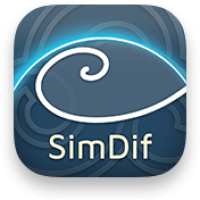How to Write the Homepage of Your Website
In short
1 - Let your visitors know where they are.
The Video
When is the best time to build your home page?
We all have the tendency to start building our site with the homepage, however, with a little bit of experience building websites you will come to understand that the right time to build your home page is:
- When you have listed the questions of your reader.
- When you have chosen the relevant language and key expressions.
- When you have chosen what your answers will be and have created your pages.
- When you have organised your pages, linked them together and tested them.
Only then will you have a clear enough vision, and sufficient knowledge, to write an effective homepage.
___
In Detail
A good tip is to build your home page from the bottom up
Just as you built your site by defining its content first, then its organization. In the same way as you define your titles only after having written the block or the page they belong to. It is from the content of your site and the titles of the tabs that you should be building the content of your homepage. When building your homepage, try building it literally from the bottom up. From the heart of the page, to the introduction of your page, to the titles.
[5]
The title of your site
This title is more about identity and place than keywords. It can be the name of your company or a nice tagline.
[4]
The title of your page
The title of the first page is a very short description of what you do, and it contains the most important keywords and often the name of a place. It is specifically here to welcome the reader and confirm that he has found what he was looking for. This title will often ideally be the most common search your readers make when they look for what you do on Google.
[3]
1 or 2 graphic elements
Our remarks related to the use of images on a website still apply here.
• The picture in your header is mostly about atmosphere. It is about providing your readers with a background feeling to the topic you are trying to present.
• The picture in your first block is here to illustrate your introduction.
Be careful: if the first picture you present is too descriptive, the visitor may build an opinion about your subject before he has actually explored any of your content.
=> Avoid placing a big picture right on your home page, keep this for an inner page.
[2]
The Introduction : Reception and Orientation
Find the sentence that works best to briefly describe the topic(s) you are presenting.
Don't forget to place direct links towards the relevant page(s) on the corresponding keywords or key expressions. This gives your reader an alternative means of navigating your site.
=> Remember that visitors on phones won't see the tabs unless they tap on the menu button.
[1]
The Description : Like a blueprint of your content
You may not need this if your introduction is long already. You don't want your readers to spend too much time on your home page, you want them to click and visit the different pages of your site.
View the description as a condensed version of the main pages of your site. Try to use the most meaningful keywords from each page. (You can still use links to your pages when relevant).
It is much easier to build an effective home page when you have written the content of your site already
To keep this description very easy to read and structured, you can start your mini-chapters with a Title: Select the words and click "T" in your site editor. It will make this sentence stand out to readers and to Google.
Writing the homepage like this will also give you a good opportunity to re think the organisation of the content and check that it is in a logical order for your reader.
The Footer
The footer provides the same information at the bottom of every page of the site.As described in the article about the links between pages, the footer is an important part of a website because of its ability to present links or information that are always visible.
A good use of the footer might be a link to the contact page, a phone number, a link to a journal page to provide the latest news, a link to another one of your sites, or just a slogan...
___
SimDif gives you the ability to use different types of pages in your site.
Click here to learn more about the types of pages you can add to your site.


